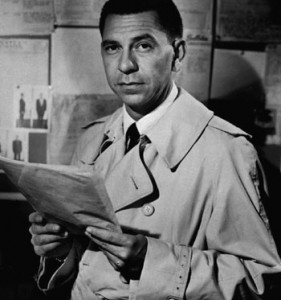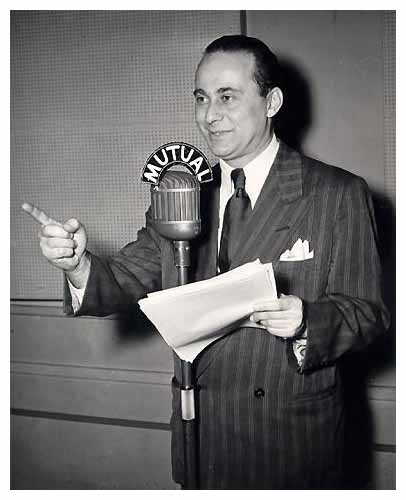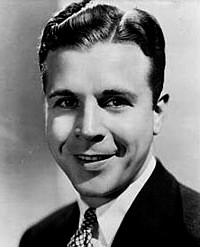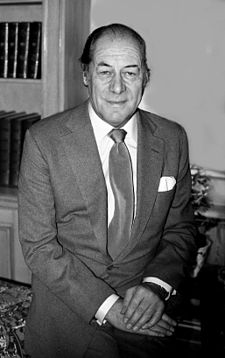Series Nine of Jago & Litefoot came out in April 2015 and finds Jago and Litefoot on a cruise, trying to enjoy some R&R after the ordeals of Series Eight.
The Series kicks off with, “The Flying Frenchmen,” Jago and Litefoot where they’re quickly thrown into mystery as the ship becomes trapped in a mysterious fog and they begin to encounter familiar faces–their own, however alternate universe versions where London has fallen under the different countries so there’s a German Jago and Litefoot, a Russian Jago and Litefoot, and a French Jago and Litefoot among others.
Overall, the story is interesting but mainly in the way it sets the stage for the rest of the series. There are clever elements thrown in that make these more than “Jago and Litefoot with different accents.” A lot about this story is unresolved by the end of it but it does set the stage for the subsequent episodes quite nicely.
In “The Devil’s Dicemen”, Jago and Litefoot disembark their ship and stumble on a series of mysterious deaths while Jago is led into a high stakes casino where winning requires forfeiting his soul. The story and features a great guest appearance by David Warner as a man who joins Litefoot in investigating the deaths. Though why he’s investigating is an open question.
Jago is a little too dense to how really dangerous the people who are inviting him to gamble at the Dark Casino are. After eight series, such credulity seemed way out of character. This is made up for at the end where Jago’s intelligence does re-emerge in a surprising twist. Plus, the mystery of what Doctor Betterman is up to is interesting throughout.
The “Isle of Death,” is another atmospheric diversion for Jago and Litefoot as they disembark from their ship to explore an uncharted isle. It’s got a nice Isle of Doctor Moreau feel with a mysterious monster causing mischief. A major highlight was the humorous twist in the reveal of the villain.
Finally, “Return of the Nightmare” is a thoroughly exciting finale as Jago and Litefoot find themselves in danger on the boat and have to confront the cause of the trouble that occurred in the series opener and has been in the background all along. What follows is an action-packed and exciting race to the finish. It’s probably the fastest paced episode of Jago and Litefoot I’ve heard. The plot is solid but is let down slightly by an ending that’s too predictable.
Overall, this is an enjoyable series even though it’s not one of Jago & Litefoot’s best. The third tale, “Isle of Death,” is probably the highlight of the box set like good Victorian Science Fiction.
In between Series 9 and 10, Jago and Litefoot appeared in the Doctor Who: Sixth Doctor: The Last Adventure. Due to contract difficulties with the BBC, Colin Baker’s Sixth Doctor was not given an appropriate final exit and regeneration story, so Big Finish decided to fill in that gap in the Sixth Doctor’s history which they do with a four episode box set. Jago and Litefoot appear in the third story, “Stage Fright.”
The Doctor and his companion Flip arrive in Victorian London where Jago is taking it easy after Mr. Yardvale (an anagram for the Doctor’s enemy The Valeyard) has rented Henry’s theater at a very high rate so he can stage auditions for his own play behind closed doors. However, all the scenes played are those of the Doctor’s past regenerations. The Doctor is set on their trail when Litefoot asks his help on examining bodies that appear to be aged to death–the actors who played in the Valeyard’s sick little drama.
“Stage Fight” has a great sense of terror as well as suspense. It features the first direct confrontation between the Valeyard and the Doctor in the box set and it’s a memorable one. The supporting cast is superb. Jago, Litefoot, and Inspector Quick are top notch, and Colin Baker really has some strong moments. Flip is a fun character, but her best moment was towards the end of the story when she faced her stage fright in a powerful way.
Series Ten begins with “The Case of the Missing Gasogene” with introduces Jago and Litefoot’s biographer Carruthers Summerton as the two try to one up each other and investigate a locked room mystery separately in order to impress Summerton. The story is full of fun and excitement, and I found it to be one of their most amusing tales.
In “The Year of the Bat,” Peter Davison’s Fifth Doctor interacts with Jago and Litefoot, albeit indirectly, through the Yesterday Box, a device that allows letters to be sent back in time, altering the current time line. This is good because they find themselves facing a foe they’d each fought thirty years before (without knowing the other party had fought their foe.) The story is one of Jonathan Morris’ most madcap Jago and Litefoot tales as we get some key highlights including the first meeting between Jago and Litefoot (which neither knew about.) This is a solid plot gimmick that works for an entertaining episode.
In “The Mourning After, ” Henry Gordon Jago is dead, or so Professor Litefoot believes. But after the coffin is lowered, we learn Jago is still alive even as his coffin is being buried.
This story is beautifully orchestrated as Henry finds himself in an apocalyptic future with the last member of the Jago and Litefoot Society while Litefoot faces the threat of zombies in the present. The story is clever and while you have an inkling of what might be going on, there are some amazing twists and turns. The scenes with Jago in the coffin are probably the most tense in the series’s history. The story also does a great job setting up the finale.
The set concludes with, “The Museum of Curiosities” where a series of bizarre murders rocks London and demands Jago and Litefoot’s attention as they have to deal with the “help” of Carruthers Summerton and muse about whether the mysterious Doctor Betterman is involved.
The story works brilliantly as a mystery. While I guessed the solution, the story didn’t let me be sure until the very last ten minutes. In addition, this clever mystery leads into a nice celebration of all the mischief and mayhem, Jago and Litefoot have faced in the course of ten series without going overboard or undermining the plot.
This is probably my favorite series of adventures. The individual episodes are superb with the finale serving as a capstone to the first Ten Series of Jago & Litefoot.
Big Finish obtained the rights to do audio dramas using characters from the revived series of Doctor Who that began in 2005. A natural fit would be to combine Victorian Age characters from the Classic and Revived Series, thus in November 2015, Jago and Litefoot were teamed with Strax the Sontaran butler in the feature length: Jago & Litefoot, & Strax: The Haunting.
The plot finds Strax, having lost his memory and moving in with Jago and Litefoot to hunt a creature that steals brains. This story is a delightful and lighthearted tale that while being fun, never crosses the line into being absurd or campy. Strax fits right into world of Jago and Litefoot, and there’s fantastic chemistry between the three leads.
The one thing I was nervous about listening to the trailer (and having seen Strax on TV) is that the entire story would be one big joke about Strax’s tendency to be unable to distinguish gender in humans. Yet, I needn’t have worried, while Justin Richards played to this suggestion from Stephen Moffat, he didn’t overplay it, thanks to a very clever scene with Ellie in the Red Tavern.
While the plot is a bit simple, the highlight is the fun character interactions. Overall, this wonderful production does a great job bringing Classic Who and New Who together.
This eleventh Jago and Litefoot series brings them face to face with the Master (played by Geoffrey Beevers) who remains in the background throughout the series before coming to the fore in the Series finale. Below is a look at each story:
Jago & Son: A fun romp that introduces us to a potential son of Jago as well as an old friend of Professor Litefoot’s. There’s plenty happening, but this story feels far less self-contained than the previous Jago & Litefoot lead off stories. It lays out a lot of threads that will be connected in later stories, with suspense and spookiness around a Satanic cult thrown into the mix.
Maurice: Probably my least favorite Jago and Litefoot episode and a bit of a disappointment from writer Matthew Sweet. The story seems almost like a generic Jago and Litefoot story, but without anything to really make it stand out. There are a few confusing points and the regulars, while still good, aren’t really given the material they need to shine.
The Woman in White: A solid installment that finds Jago meeting up with his friend Bram Stoker in response to Sir Henry Irving behaving oddly. In addition, the most recent production has been plagued by a series of disappearances and strange happenings. The professor’s end of the investigation is a little less interesting, but taken together, this is an exciting and suspenseful story.
Masterpiece: The episode suffers from a lot of waiting and repetition. A body is dropped off at the morgue drained-just like in the previous episode, although there is a difference in what it has been drained of. The focus of the episode is Jago and Litefoot trying to solve a mystery that’s already been revealed to the audience. We also spend much of the episode waiting for the Doctor to arrive.
What does make this work are the solid performances, most notably from Geoffrey Beevers as the Master. The Master isn’t content to wreak havoc for his purposes, but also sets up Ellie for danger and disaster in Series Twelve. The story deserves credit for how it gets the Doctor in. You spend most of the episode expecting the Doctor’s arrival (for that’s the whole point of the Master’s plan) only to realize the truth. Of course, once you realize the truth, the rest of the plot becomes obvious.
Overall, this is probably my least favorite Jago and Litefoot outing. The stories aren’t bad by any means but most of them call to mind prior stories, and recent ones in many cases. Jag & Son uses a satanic cult after one had just been featured featured in Series Nine’s “The Devil’s Dicemen.” Even the best story in the set, “The Woman in White,” has a similar to solution to Jago, Litefoot, and Strax: The Haunting, and I’ve noted my problems with “Maurice” above.
The problem may be the Master. Don’t get me wrong. Geoffrey Beevers is great but this may be a case of mixing two great ingredients and not getting a good finished product. Jago and Litefoot, two mystery-solving paranormal detectives matched against Beevers’ Master, the skulking and the obvious ultimate bad guy really doesn’t work as well as you’d think.
Even though the most recent series was disappointing, Jago & Litefoot has a strong track record and will bounce back with Series Twelve, which will be released later on this month.
Over the course of the last seven years, they’ve had an amazing variety of fantastic adventures. The entire series is a testament to the power of audio and imagination as two Octagenerian actors play characters who embody the spirit of adventure through one vigorous case after another, something that just couldn’t be done on television.
Big Finish has created a series that has an established brand and feel but still manages to come up with new twists and new facets to their characters. Jago and Litefoot have had an incredible run and I hope they carry on for many years to come.
This post contains affiliate links, which means that items purchased from these links may result in a commission being paid to the author of this post at no extra cost to the purchaser.
If you enjoyed this post, you can have new posts about Detective stories and the golden age of radio and television delivered automatically to your Kindle.






